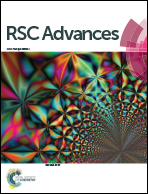XRD and XPS studies of room temperature spontaneous interfacial reaction of CeO2 thin films on Si and Si3N4 substrates
Abstract
X-ray diffraction (XRD) and X-ray photoelectron spectroscopy (XPS) investigations of interfacial reactions between Ce and Si have been carried out on the same set of as-deposited and 15 month aged films. XRD patterns demonstrate the presence of several peaks associated with CeO2 planes in aged CeO2/Si3N4 thin film in comparison with as-deposited nanocrystalline film, whereas the peak is broadened in the CeO2/Si film after aging. XPS studies show that interfacial reaction occurs spontaneously in CeO2/Si thin film at room temperature. Ce is present as both Ce4+ and Ce3+ oxidation states in as-deposited CeO2/Si thin film, whereas Ce4+ is the main species in CeO2 thin film deposited on the Si3N4 substrate. When XPS is recorded after 15 months, the concentration of Ce3+ species is observed to increase drastically in the CeO2/Si thin film. In contrast, interfacial reaction between the CeO2 and the Si3N4 substrate is not significant in the film even after 15 months of deposition. This shows that the initial room temperature spontaneous interfacial reaction observed in the CeO2/Si film continues at a much higher rate, whereas the nature of the CeO2/Si3N4 interface remains the same after 15 months, proving its stability.


 Please wait while we load your content...
Please wait while we load your content...